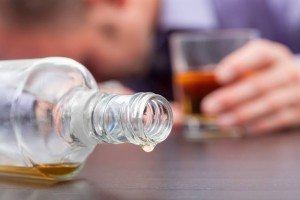

Five Types of Alcoholics Identified
The more we know about mental illness and diseases like alcoholism, the more we understand how they work. At the same time, the more we understand, the more questions we have, which leads to more research into these fields. Traditionally, drinking-related substance abuse has been classified into four major categories:

-
- Problem drinking, which is described as any drinking that’s to the point of intoxication and that impairs decision-making
- Binge drinking, which is drinking copious amounts of alcohol frequently
- Alcohol abuse, which is regular drinking with a constant increase in the frequency and quantity consumed
- Alcoholism, which is characterized by a physical and psychological dependence on alcohol
In the last few years, however, the National Institute on Alcohol Abuse and Alcoholism has conducted an extensive survey regarding alcoholism. Their findings have further divided alcoholics into five separate categories based on patterns of alcohol dependence. The five types of alcoholics they identified are:
-
- Young adult alcoholics
- Young antisocial alcoholics
- Functional alcoholics
- Intermediate familial alcoholics
- Chronic severe alcoholics
Not only do these categories help alcoholics and medical experts better understand this disease, but they also help rehab and detox centers in Florida to treat it more effectively. These alcoholism types describe people of different age groups and at various life stages, who come from different backgrounds and are involved in different relationships, and who suffer from varying types of mental illness and struggle with different medical issues, so it only makes sense to understand the different types of alcoholics before seeking or offering treatment.
Types of Alcoholics Described
Together, young adult and young antisocial alcoholics account for about half the alcoholism in the United States, and young adult alcoholics alone make up about 32 percent. On average, these alcoholics are around 24 years old, but most started drinking around age 20. And while young adult alcoholics typically drink less often than other alcoholics do, they tend to binge drink more often, and on drinking days, they average a 14 drink maximum.
In this category, the alcoholics are more likely to be male, most have never been married, about half are employed full-time, and a fair number are still in school. Furthermore, most of these alcoholics don’t have any co-occurring mental illnesses, alcoholism doesn’t tend to run in the family, and it is rare for them to seek treatment. Instead, this is one of the alcoholism types with high denial rates, with sufferers often chalking up their excessive drinking to a lifestyle choice. Those who do seek treatment for their alcoholism generally prefer 12-step programs.
Young Antisocial Alcoholics
These alcoholics are people in their mid-twenties, most are male, and most became dependent on alcohol around the age of 18. There is a strong correlation here between their alcoholism and the alcoholism of a close family member. Many suffer from co-occurring disorders, namely depression, bipolar disorder, social anxiety disorder, or an antisocial personality disorder, which is characterized by:
-
- Fighting and assault
- Criminal activity and deceitfulness
- Lack of remorse
- Irresponsibility and a disregard for the safety of others
There is a high rate of other substance abuse with this alcoholism type, including cigarettes, cocaine, opiates, and marijuana. The maximum number of drinks people in this category consume is around 17, the highest of all the groups. About one-third of the people in this category seek treatment, and when they do, they tend toward self-help groups, specialty programs, and detox programs.
Functional Alcoholics
About 20 percent of alcoholics fall into this category, which is typically made up of middle-aged men and women from families with a long history of alcohol abuse. Like young antisocial alcoholics, about half of these alcoholics also suffer from depression or bipolar disorder. Unlike the previous alcoholism types, however, functional alcoholics generally have steady employment, are in stable relationships, have a higher level of education, have higher family incomes. They tend to drink daily or every other day. Of the one-fourth of people in this group who seek treatment, most prefer 12-step programs and private healthcare programs.

Intermediate Familial Alcoholics
Functional and intermediate familial alcoholics share a lot of characteristics. Still, the defining qualities between these two alcoholism types are that intermediate familial alcoholics are more likely to have a genetic predisposition for alcoholism and more often come from families with high rates of alcoholism. Intermediate familial alcoholics usually become alcoholics earlier in life—in their early 30s—than functional alcoholics. There are higher instances of cigarette smoking and cocaine and marijuana use in this group.
Of all the types of alcoholics, this sub-group has the highest employment rate, with about 68 percent holding full-time employment. About one-third seek treatment for their dependence, and those who do usually opt for private healthcare programs, specialty programs, detox treatments, and self-help groups.
Chronic Severe Alcoholics
Although this category accounts for less than 10 percent of alcoholics, this is one of the most detrimental alcoholism types. This group has some of the highest antisocial behavior, criminal behavior, divorce, co-occurring mental disorders, and other substance abuse. Moreover, this group also has the highest rates of:
-
- Alcohol-related emergency room visits
- Withdrawal experiences
- Alcohol-related problems at work, school, and in their personal lives
- Drinking more than they intended
In this group, the alcoholics are mostly men around 38 years old who have been dependent on alcohol for at least 10 years. However, of all the types of alcoholics, those in this group are the most likely to seek treatment for their dependence, with about two-thirds seeking help in the form of self-help groups, detox programs, inpatient treatment, and specialty rehab.
Of these types of alcoholics, two-thirds seek treatment. If you’re suffering from alcohol addiction and need to go through alcohol rehab in Florida, contact us today or call 877-672-3967, to speak with one of our trained specialists. You can also verify if your insurance will cover the cost of rehab.


